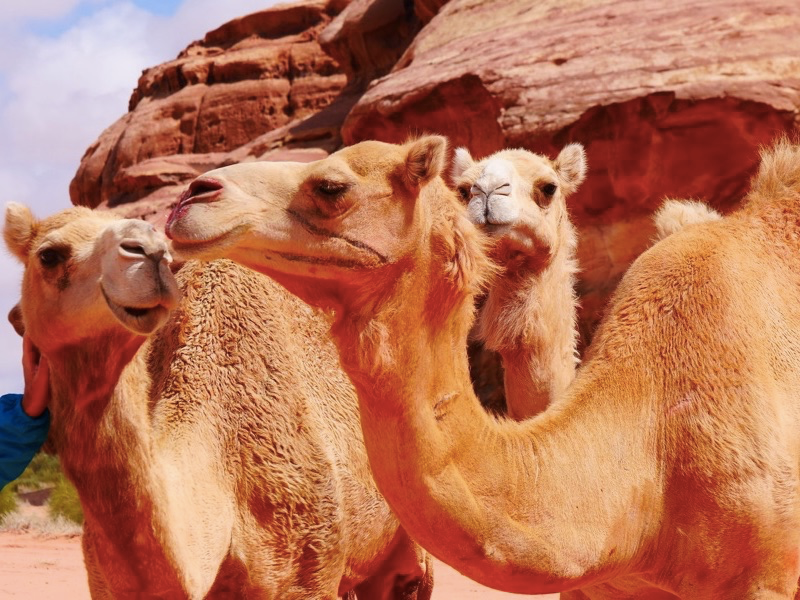Camel Hair
Camel hair is one of the types of wool with its thermostatic properties and luxurious texture that has captivated over the centuries, both for its traditional uses and its versatility in different areas of the textile industry.
The history of camel hair within the textile industry is rich and fascinating. From its ancestral origins to its relevance in today's fashion, this material has proven its value over time.
Its softness, durability and insulating properties have made it a perfect choice for premium garments. Join me on a journey through the world of camel hair and enjoy the elegance and comfort it brings to the textile world.
HISTORY OF CAMEL HAIR
Since ancient times, camel hair has played a significant role in the textile industry in different cultures throughout history. Schematically, it is possible to trace the following chronology:
- Traditional uses. The Berbers and other camel-dependent communities in North Africa valued camel hair for making tents, rugs and cloaks. Its durability and insulating properties were essential in harsh climates.
- Adoption in Western garments. From the 17th century onwards, pure camel hair was used in Western garments. However, in the 19th century, a blend of wool and camel hair became popular, taking advantage of the unique characteristics of both materials.
- Jaeger's influence. The British fashion brand Jaeger played a key role in the popularisation of camel hair. Specialising in the use of fine wool fabrics for coats and suits, the brand introduced camel hair to the fashion industry.
- Expansion in the United States. In the 1920s and 1930s, camel hair became popular in the United States. Its introduction was through the sport of polo, where players opted for casual camel hair coats, which contributed to its popularity in American fashion.
WHAT ARE ITS ORIGINS?
Camel hair, a valuable and versatile fibre, has its roots in the vast regions of Asia and North Africa. We invite you to learn about the origins of this unique fibre in different parts of the world:
- Mongolia and Siberia. These regions are home to a large population of Bactrian camels, with Mongolia being a major supplier of camel hair.
- Tibet and Nepal. In these mountainous areas, Bactrian camel breeders have perfected camel hair collection.
- Iran and Afghanistan. These countries are known for their production. Breeders are carefully dedicated to breeding and maintaining high-quality Bactrian camels.
- China and Russia. Both regions have a long tradition of camel hair collection. These countries have developed specialised techniques to obtain fibre in an animal-friendly and quality-preserving way.
CHARACTERISTICS OF CAMEL HAIR
Camel hair is a valuable fibre obtained from Bactrian camels. Here are the details of its collection and the unique characteristics of its different layers:
- Camel hair collection. Each camel can produce around 2.25 kg of hair per year. The fibre is collected in a variety of ways, either by cutting it, combing it or collecting the hairs that are naturally shed during the moulting season, which usually lasts six to eight weeks in late spring.
- The protective coat. The Bactrian camel's protective coat is hard and thick, designed to protect the animal from the rigours of winter on the steppes. Although this coat alone is not suitable for garment making, it can be mixed with other substances, such as sheep's wool, to produce a higher-quality fabric.
- The inner layer. On the other hand, the inner layer of camel hair is soft and fluffy (Bactrian camels use it as an insulator). It is this inner layer that is used to make clothing. Its thin fibres are easy to make into yarn and offer a pleasant texture to the touch.
Uses
Camel hair has proven to be a valuable resource in the textile industry, thanks to its softness, durability and thermal insulation. Here are some of its most important uses:
- Winter coats and jackets. Camel hair is widely used in these garments, especially in the colder seasons. Its thermal insulation provides warmth, comfort and protection from the cold.
- Scarves and shawls. Due to its softness and luxurious texture, it is ideal for the creation of these garments not only because they provide warmth, but also because they add elegance and sophistication.
- Gloves and hats. Because of their ability to keep hands and head warm, softness, thermal insulation and resistance, it is ideal for this type of high-quality and durable accessories.
- Knitted fabrics and jumpers. The creation of knitted fabrics in jumpers and knitted garments stands out for its elegant appearance and its ability to provide warmth without compromising on lightness.
- Carpets and rugs. These products are used in the manufacture of these products for their durability and wear resistance to decorate interior spaces, adding luxury and warmth.
Camel hair has played multiple roles in the textile industry throughout history for its softness, durability and thermal insulation. This makes it a highly valued resource.



Users Reviews